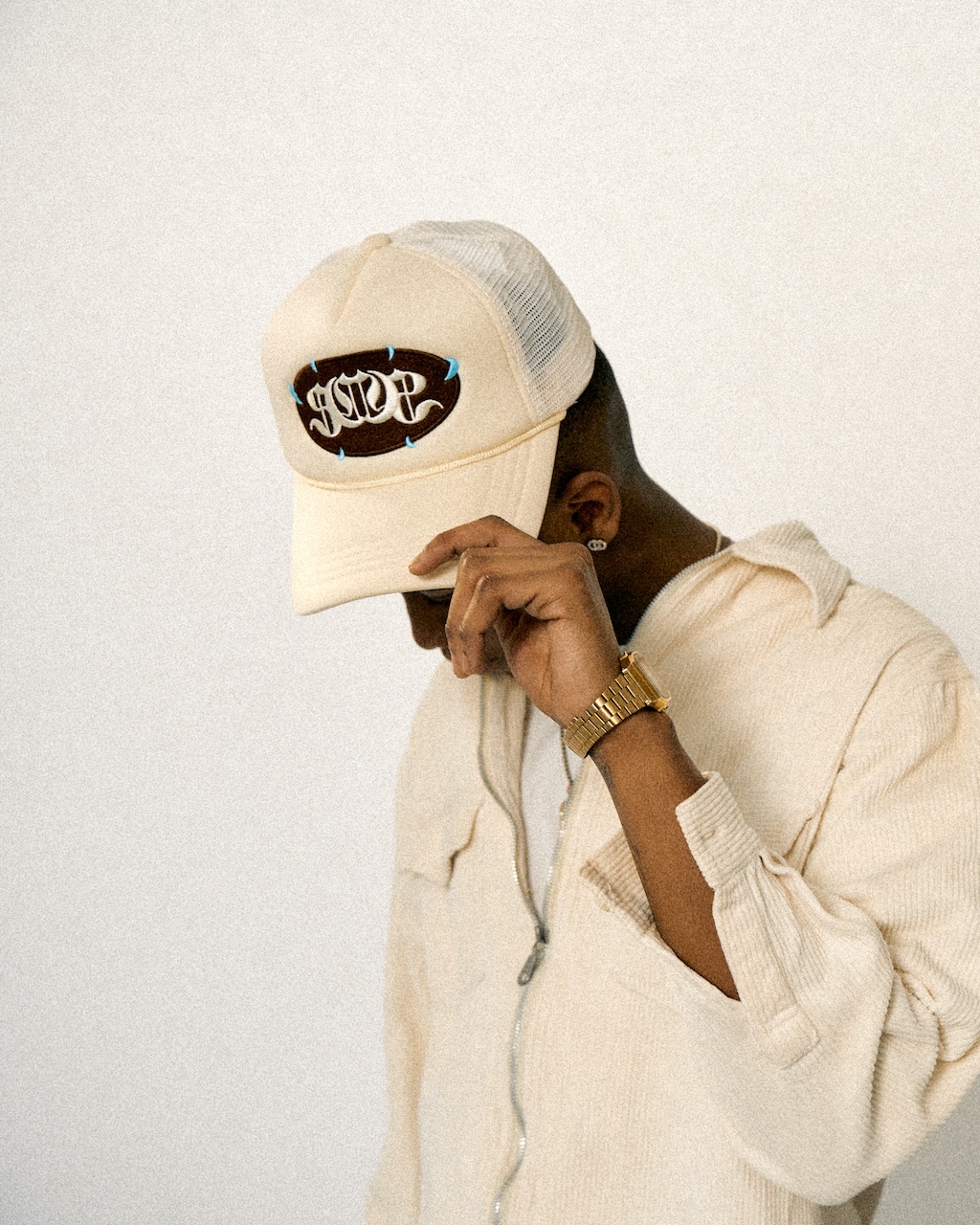Between Symbol and Substance – When Ideals Become Instruments

From #MeToo to Black Lives Matter and City Harvest Church: What happens when movements grow into systems—and ideals start to operate on their own logic?
Share to Social Media

Between Symbol and Substance – When Ideals Become Instruments
It often begins with an intention no one could reasonably oppose. A report. A testimony. A movement trying to make something better. It lifts people up, protects the vulnerable, brings light to what’s long been kept in shadow. And it resonates—through media, across social platforms, in institutions and boardrooms.
The Easiest Way to Stay GDPR-Compliant
But that resonance can change. It sharpens. It hardens. It gathers around a figure, a name, a face—something tangible that can carry a story. And in that moment, the individual risks becoming something else: reduced to evidence, to image, to a convenient reflection of a larger cause.

The case of Jes Dorph-Petersen—a prominent Danish television anchor—made this painfully clear. In 2020, the former TV 2 anchor was dismissed following a law firm’s internal investigation, launched in the wake of #MeToo. He was never charged, never convicted. Still, he became a symbol. An institution distanced itself. The public reacted. A career collapsed—built on a process that, years later, Denmark’s Supreme Court ruled had violated professional legal standards.
This article doesn’t seek to undo progress. It doesn’t aim to reconcile every actor with every injustice of the past. But it does linger in the tension—between ideals and institutions, between solidarity and strategy. It asks how a noble cause, in the company of media, power, and moral urgency, can take on a momentum of its own—more than intended, and sometimes less.
When a Story Gains Power—and Meets Friction
There’s a certain force in a mission no one wants to contradict. It often begins with lived experience, witness accounts, systemic imbalance. But gradually, the character changes. What started as a necessity becomes a story—and the story begins to move on its own.

Design. Build. Launch. No Code Needed.
From portfolio websites to full webshops – Elementor lets you build custom WordPress sites visually, fast and beautifully. Join 14M+ users who choose freedom, flexibility, and full design control.
In the music industry, a sharper focus has emerged in recent years on cultural misogyny—on how women are routinely undermined through discrimination, harassment, and coercion. The movement is underway. Reports are surfacing. Institutions are responding. And the ripples keep expanding.
In the UK, the parliamentary report Misogyny in Music: On Repeat, published in early 2024, brought this into sharp relief. Drawing on extensive testimony, it detailed how women and marginalised genders across the British music sector had been subjected to abuse, bullying, and blacklisting—often underpinned by non-disclosure agreements and opaque power structures. The report didn’t just document misconduct; it demanded reform: a ban on NDAs in harassment cases, new regulatory oversight, and structural accountability across the industry. But even as these recommendations circulated, something else happened. It sparked headlines, institutional responses, and industry-wide alignment—often before its findings were even fully absorbed.
Another example is the Danish report The Sound of Courage, published in 2025, which compiled testimonies about sexism and power dynamics in Denmark’s music industry. Seventy-one people. Over a hundred statements. The report aimed to illuminate what had long been normalized but never neutral: the silences, the subtle shifts in power, the powerful unspoken. It succeeded. It was received as intended—with gravity, respect, and resonance.
But here’s where friction arises. When reports like these become more than documentation—when they turn into moral landmarks, things you’re expected to take a position on even if you haven’t read them. People feel pressure to show alignment with the message—even if they haven’t engaged with its actual content.
They began appearing outside themselves. Quoted in political statements. Referenced in industry branding. Cited as moral compasses in panels and public discussions. Not necessarily misused—but increasingly instrumentalized. As symbols. As shorthand for having “understood something important.”
When a report becomes a narrative, and the narrative becomes a symbol, it risks detaching from its own material. It begins to have influence—even where it’s no longer being read. And in that detachment, something may be lost: not intensity, but complexity.
A Name, a Case, a Cultural Mood
In December 2020, Jes Dorph-Petersen, one of Denmark’s most recognizable news anchors, was dismissed from TV 2 after a law firm’s internal investigation connected him to accusations of inappropriate conduct. He was neither charged nor convicted, but the fallout was swift. He became a public emblem of a larger reckoning—a part of Denmark’s post-#MeToo course correction.
Two years later, the case reached a critical epilogue. The lawyer behind the investigation, Yvonne Frederiksen, was formally criticized by the Danish Bar Association for procedural misconduct. She appealed, but both the Eastern High Court (Østre Landsret) and, finally, the Supreme Court (Højesteret) upheld the decision in 2025: the investigation had violated ethical standards of legal practice.
Dorph welcomed the ruling. But by then, the damage was done.
And so the question lingers: what happens when a person becomes evidence—not of a crime, but of a cultural moment? When due process fades into the background, and symbolic weight carries more force than factual outcome?
It’s a mechanism not confined to Denmark. One of its most visible examples played out in a courtroom in Virginia.
When Courts and Media Merge
The 2022 trial between actors Johnny Depp and Amber Heard gave the world a front-row seat to the collapse of boundaries between legal proceeding and public performance. Depp sued Heard for defamation based on a Washington Post op-ed in which she described surviving sexual abuse—without naming him directly. Still, the fallout was immediate and damaging for his name and career.
After six weeks in court, the jury found three of Heard’s statements to be false and malicious. Depp was awarded over $10 million in damages; Heard won one counterclaim and received $2 million.
The trial exploded across social media. Under the hashtag #JusticeForJohnnyDepp, billions of videos, memes, and live streams turned legal testimony into viral theatre. It wasn’t just a trial—it was a global circus.
Depp described himself as a “crash test dummy for #MeToo.” A man whose identity had been consumed by a movement he never subscribed to. If Dorph was caught in the machinery of institutional response, Depp was caught in the algorithmic public sphere. Different scales—same dynamic: an individual subsumed by symbol, sentiment, and collective projection.
The Movement as Machine – and Those Caught in the Gears
Seen side by side, these cases reveal not just differences, but troubling similarities. Not in guilt or innocence—but in the machinery around them. In how movements, over time, can begin to operate like systems.
What begins as a push for collective change can gradually be absorbed by institutions, brands, and organizations. The result is a structure that uses the original cause as fuel—even when it loses touch with the very reality it sought to address.
Black Lives Matter has faced this tension. A movement born to confront systemic racism became a global moral beacon. But internally, it drew criticism—over financial transparency, leadership conflicts, and a widening gap between national leadership and local activists. A foundation purchased a luxury property for over $6 million. Local organizers felt sidelined. Some leaders were accused of financial misconduct. Others stepped down amid mounting disagreement.
The mission didn’t collapse. But the structure began to overshadow it. An ideal meant to unify was pulled in directions it was never built for.
In Singapore, a different story. City Harvest Church—one of the nation’s largest Pentecostal congregations—sought to spread its message through pop music. Over several years, more than $35 million was funneled into the music career of the pastor’s wife, framed as a missionary project. In 2015, six senior church leaders were convicted of financial fraud. The system they built had allowed the cause to mask internal transfers of power and money.
This wasn’t about failed theology. It was about accounting. About trust. About how goodness, once institutionalized, can become a wall—one that hides what happens behind it.
Two very different narratives. And yet, curiously aligned. Because when a cause evolves into a system, and that system begins to move under its own steam—almost autonomously—it risks losing touch with what it was meant to serve. And someone always gets caught in the gap.
When Virtue Becomes a Passcode
But it doesn’t stop there. What begins as drift can become design.
The stronger a cause appears, the more attractive it becomes—not just to those who believe in it, but to those who see it as a tool. First comes genuine engagement. Then comes performance. Finally, positioning.
In the cultural world, the right message can open doors: to funding, visibility, legitimacy. That doesn’t make it wrong. But it does make it fragile. When something works too well, it’s often because it’s been simplified—stripped of contradiction, immune to critique. At that point, a real movement risks being replaced by a hollow symbol.
Being inside a movement is not the same as using it as a platform. Procedures must not bend to moods. A message loses its power if it becomes too easy to wield. Which is why both engagement and resistance demand reflection and discernment—even when the cause seems obviously right.
When the Right Thing Isn’t Simple
The stories here trace noble intentions that led to complicated consequences. Symbols that grew faster than their narratives. People pulled into movements they never chose to represent.
This isn’t a rejection of those movements. On the contrary—it’s because they matter that they require care. And care means critique—not as opposition, but as fidelity. Only what we take seriously is worth protecting from distortion.
It takes more than good intentions. It takes the willingness to stay in discomfort—where answers are unclear, and truth can’t be trimmed into slogans. That is where integrity is tested. And where it matters most.
Read more
- Misogyny in Music: On Repeat – official UK Parliament report (2024)
- Summary and recommendations – UK Parliament Women and Equalities Committee (2024)
- The Sound of Courage – report by Analyse & Tal (April 2025)
- The Sound of Courage – follow-up report by KVINFO (June 2025)
- Jes Dorph-Petersen welcomes ruling from the Danish Supreme Court – DR News (May 2025)
- Amber Heard’s op‑ed in The Washington Post (2018)
- Depp vs. Heard – verdict and damages summary – CBS News (2022)
- Financial scrutiny of BLM’s national organization – New York Magazine (2022)
- City Harvest Church – The Guardian on fraud convictions against Kong Hee & others (2015)









